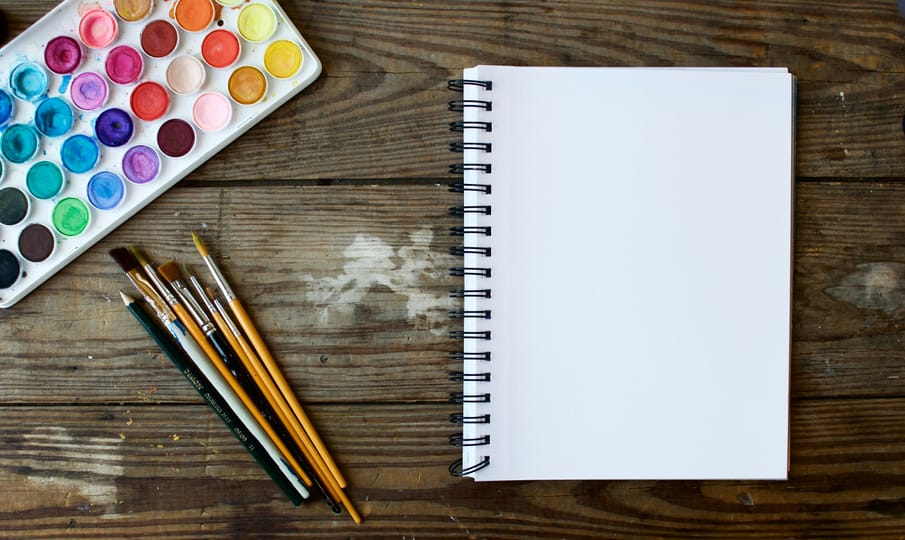Researchers suggest that providing opportunities for creativity could significantly boost public mental health
A new study from scientists at Anglia Ruskin University (ARU) suggests that engaging in creative activities such as arts and crafts can be as beneficial to mental wellbeing as having a job, if not more. The study used data from the Taking Part survey, which is conducted each year by the UK's Department for Culture, Media, and Sport (DCMS) to learn about people's hobbies and how they spend their free time.
The study asked participants about their levels of happiness, anxiety, loneliness, life satisfaction and whether they took part in arts or crafts. More than a third of participants noted they had taken part in at least one arts or craft or artistic activity over the past year, ranging from painting to pottery and knitting to photography, filmmaking and woodworking.
The findings revealed that individuals who engaged in arts and crafts reported higher levels of happiness and life satisfaction compared to those who did not, even when accounting for factors such as age, gender, socioeconomic status, health, and employment. Interestingly, the benefits of arts and crafts were found to be even more significant than the positive effects associated with employment.
Lead author of the study Dr. Helen Keyes of Anglia Ruskin University noted, “That was probably our most interesting finding because you would certainly think you get a lot of your sense of worth from being in employment. Not only does crafting give us a sense of achievement, it is also a meaningful route to self-expression. This is not always the case with employment. The results might reflect that not everybody is in a job they find fulfilling, while people often have a sense of “flow” when undertaking arts and crafts – experiencing control, achievement and self-expression.”
Why is creativity so important for mental health?
Have you ever been so immersed in writing in your journal, painting a picture or dancing to your favourite song that you lost all sense of time? This is known as a ‘state of flow’ where we become so engaged in an activity to the point it feels almost meditative. When you're in flow, your brain releases "feel-good" chemicals which contribute to a sense of happiness, fulfilment, and calm. On top of that, completing a creative project can activate the brain’s reward system bringing a sense of pride and accomplishment, making you more likely to feel motivated to seek out other creative opportunities.
Activities such as art, writing, drama or music can help us process emotions related to past or present experiences in a positive way. Expressing ourselves creatively can offer new perspectives on our feelings and help lower stress and anxiety. Even simply experiencing creativity by attending a concert or visiting an art gallery has been found to lower stress levels. Often, creativity prompts reflection and self-expression, as we grow more confident in expressing ourselves, we may find it easier to share our thoughts and feelings with others in our lives, leading to better connection and understanding in relationships.
“One huge reward creativity can give is to allow us to have a voice when we do not have the ability to verbalise how we feel. Creativity can heal the silent voice. Often, I witness this reward in my counselling practice. When a client sits, unable to express and verbalise their emotions and feelings, I may gently introduce creative exercises into the therapeutic relationship if I feel it fits the client well” says Counselling Directory member Donna Webb.
What is creative therapy?
Often referred to as expressive therapies, creative arts therapies are centred around artistic mediums and visual arts, such as painting, dancing, music and drama. These therapies focus on the process of creating art as a way to express emotions, explore personal experiences, and encourage emotional healing.
In her article ‘What is creative therapy?’ Counselling Directory member Beverley Moslin notes, “Creative therapy combines talking therapies with expressive arts techniques and materials. This can mean using art in the therapy room, such as drawing, painting or collage, and it can include anything from movement, dance and play to creative writing and music. It’s possible to explore using creativity with therapy in lots of ways and different creative or arts-based therapists will be able to support you in doing this.”
If you find it hard to express yourself verbally, creative therapies may be helpful. You can learn more about the power of creative therapies on Counselling Directory.


Comments